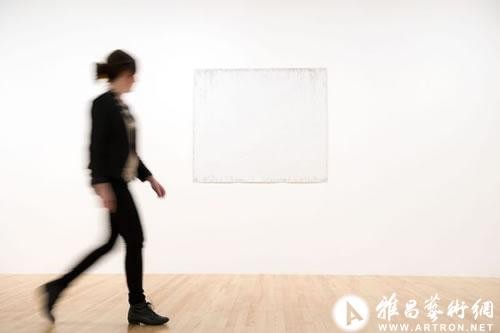
London's Provocative Invisible Art Exhibit: To See or Not to See?
2012-07-06 09:27:15 Marcia Adair

Bruno Jakob's "Breath floating in color as well as black and white (Venice) 2011" on exhibit as part of "Invisible: Art of the Unseen 1957-2012" at the Hayward Gallery in London. (Linda Nylind)
For those who leave modern art exhibitions feeling like Charlie Brown after Lucy has yanked the football yet again, take heart. From now until Aug. 5, you can head to the Hayward Gallery in London, plunk down 8 pounds and see absolutely nothing. Mostly.
"Invisible: Art About the Unseen 1957-2012" is not, according to gallery director Ralph Rugoff, a publicity stunt, but rather a meditation on seeing.
“I often go to museums and see people walking through galleries of great art in a drive-by manner," he said. "They might as well be on golf carts. You can’t do that with this kind of art. You have to engage with it. There’s no point photographing yourself next to a blank piece of paper.”
Conceptual art haters will be annoyed to find that, in this case, the emperor is quite happily naked and anxious for you to think about space, time, ritual and the essence of being rather than his state of undress.
Song Dong learned Chinese calligraphy by painting on rocks with water, so as not to waste paper and ink. His “Writing Diary With Water, 1995” began as a way for him to express his innermost thoughts, with the added convenience of no communist authority ever being able to read them. Over time it has become a ritual meditation in which the content is less important than the act.
The Italian artist Gianni Motti drew images on several pieces of paper with invisible ink. Only he knows what is on the paper. Lemon juice might reveal the image but would also destroy it.
This requirement to engage means the gallery is mercifully free from tourists on Art’s Greatest Hits scavenger hunts. To get anything out of the exhibition, you need to be prepared to meet the artist halfway. Which, it turns out, is mostly the point.
Said Rugoff, “[Marcel] Duchampsaid that half the work of art was created by the spectator, and I think one thing this show is about is that the creativity that you as a visitor to a show bring by interpreting the work, and a lot of this is unconscious, we do it automatically, there’s sometimes a very thin line between that kind of creativity and the creativity of the artist.”
Tom Friedman’s “1,000 Hours Staring” is a piece of paper that he has stared at for 1,000 hours. That’s about an hour a day for five years. When you look at it, you are performing the same action the artist used to create it. Does the artwork change with each viewing? Do you change?
Of course, there are some absurdities to reconcile when practical meets conceptual. In the case of Andy Warhol’s 1985 piece “Invisible Sculpture,” the plinth on which he originally stood in order to imbue it with his celebrity has been destroyed. What stands in the gallery is a replica. But, if Warhol’s celebrity is missing, is the replica not just a pedestal?
Rugoff insists that the piece is representational, so Warhol’s absent aura isn’t as important as the idea of its presence.
On the other hand, Friedman’s “Untitled (A Curse) 1992” lists as its materials witch’s curse and pedestal. Accordingly, its travel crate has a space for the curse to make the journey uncompromised.
A load of pretentious twaddle or a legitimate starting point for that evergreen “What is art?” Either way, there is one point that can’t be argued. Said Rugoff, “A lot of the things that really concern us in life are invisible.”
(责任编辑:刘正花)
注:本站上发表的所有内容,均为原作者的观点,不代表雅昌艺术网的立场,也不代表雅昌艺术网的价值判断。
 阿拉里奥画廊上海转型:为何要成为策展式艺术商业综合体?
阿拉里奥画廊上海转型:为何要成为策展式艺术商业综合体? 李铁夫冯钢百领衔 作为群体的早期粤籍留美艺术家
李铁夫冯钢百领衔 作为群体的早期粤籍留美艺术家 吕晓:北京画院两个中心十年 跨学科带来齐白石研究新突破
吕晓:北京画院两个中心十年 跨学科带来齐白石研究新突破 翟莫梵:绘画少年的广阔天空
翟莫梵:绘画少年的广阔天空
全部评论 (0)